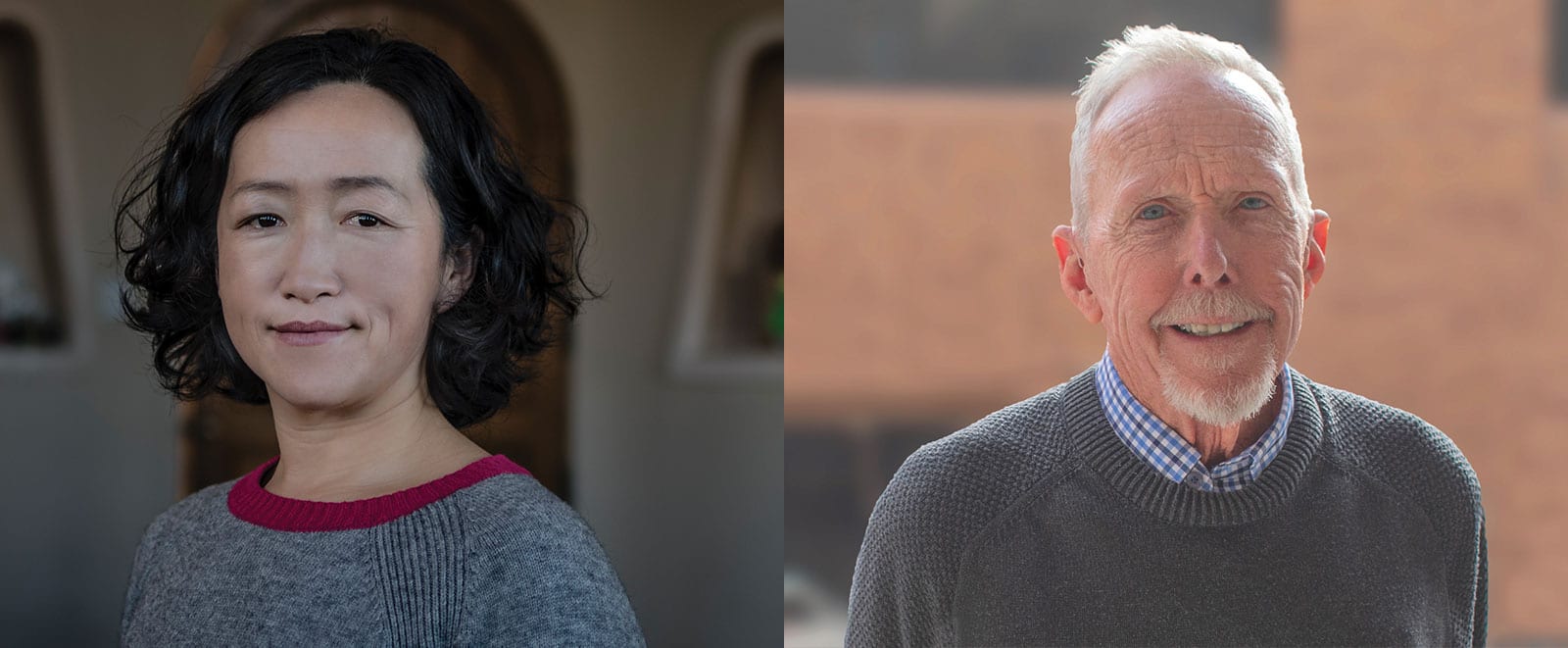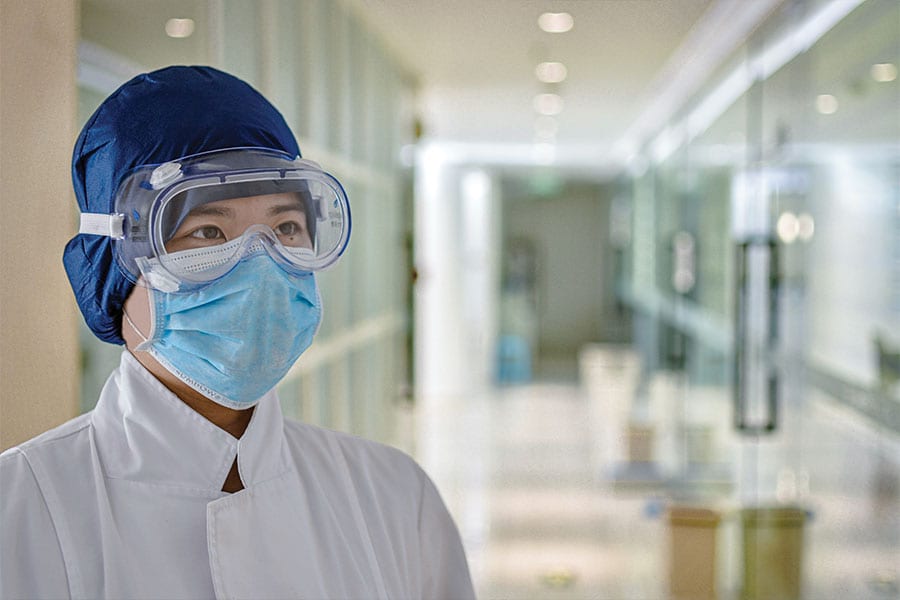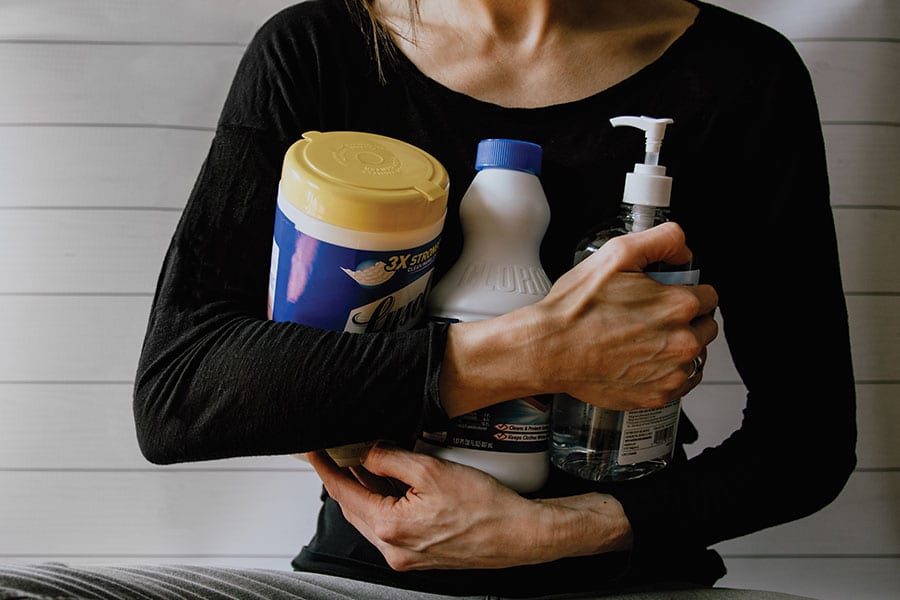
UNM team invents antimicrobial polymers that neutralize the coronavirus
By Leslie Linthicum
In the laboratories of the nation’s top-tier research universities, scientists experiment and engineers tinker, looking to expand fundamental knowledge about cells, space, subatomic particles and everything else around us.
Often, that basic science leads to discoveries and sometimes those discoveries are made at exactly the right time.
David Whitten has never liked the dueling reputations of basic science research as science for science’s sake and application-driven research as the problem-solver.
“I don’t buy that,” says Whitten, a Distinguished Professor in UNM’s Department of Biological & Chemical Engineering. “I think a lot of scientific-driven research finds an application — even if you weren’t in search of it.”
Whitten has focused a long career on conjugated polymers, something few of us have ever heard of, much less understand. They are a class of polymers — substances composed of linked large molecules — that are complicated organic semiconductors.
“You can think of them as being like beads that you string,” Whitten explains. “One bead touches another and another, and so forth. It’s a repeating pattern and that motif goes on and on and on. When certain of the polymers touch, they conduct electricity. And, when they are excited by being exposed to light, they absorb light and emit light.”
He has worked on these synthetic molecules and their biological applications for the past 15 years.
Elsewhere in the Department of Biological & Chemical Engineering, Professor Eva Chi has collaborated with Whitten to learn more about his synthetic polymers.
“My collaborations with him have been figuring out why these work and how these work,” Chi says.
Nearly a decade ago, the team discovered that the excitable polymers were really good at acting as antimicrobials, selectively inactivating bad bacteria, spores and some viruses.
They published a paper on their work in 2011.
Then came coronavirus.


“At the beginning of the pandemic we were just all scrambling — what can we do to contribute during this pandemic?” Chi recalls.
They thought back to their paper and remembered that the properties they were studying were also antiviral.
Whitten and Chi reached out to Alison Kell, an assistant professor in the Department of Molecular Genetics & Microbiology at the UNM School of Medicine, whose lab studies RNA viruses, and who had access to samples of SARS-CoV-2, the virus that causes COVID-19.
They didn’t see any reason their polymers wouldn’t grab onto SARS-CoV-2, so when UNM’s labs reopened in June, Chi and Whitten chose polymers they thought were most promising, given the characteristics of the virus, then made solutions containing them and took them to Kell’s lab at the Health Sciences Center.
Kell got back to them with a week. They worked.
It’s tempting to say the team found a weapon to kill COVID. But SARS-CoV-2 is a virus — meaning it’s not made out of cells and is unable to grow on its own. A virus is more like an android or a robot that can invade a cell and instruct it to manufacture more virus. So the UNM polymer discovery doesn’t kill coronavirus; rather it attracts the virus and immobilizes it. Then, when exposed to light, it inactivates the virus so it no longer spreads.
They began to run more tests to make sure the results weren’t a fluke and settled on two different polymers that both inactivated the virus.
“They all were very effective and there was no indication the coronavirus could be resistant to our materials. We could inactivate them completely,” Chi says.
“This to us was a really big discovery and we were really excited about it,” Whitten said.
They wrote a paper on their results (published in December in the journal ACS Applied Materials & Interfaces), filed for patents on the process and began working with BioSafe Defenses, a tech transfer company that both are part of, to secure expedited registration of their product with the Environmental Protection Agency so it can be marketed.
“In terms of how effective these compounds are, they’re really outstanding,” says Chi, who envisions the company producing disinfecting wipes, sprays and even fabrics for face masks.
The benefit of a polymer-based disinfecting product is its effectiveness and its staying power.
“The polymers, having all this charge, they will stay on a surface for quite a long time — several days — and continue to be effective,” Whitten says. Additionally, surfaces can be wiped off and the coating still stays effective.
That could be a game-changer in terms of opening the economy while still staying safe. Restaurants could use the product on tables a couple of times a week; malls could use it on handrails and door handles; sports stadiums could wipe down seats; medical offices and hospitals could avoid constantly wiping down everything touched by patients and caregivers.
There’s also promise in making personal protective equipment more effective by incorporating the polymer material in the outer layer of face masks, where it could sequester the virus and inactivate it before it reached a user’s airway.
Whitten is ecstatic about the discovery, calling it “the most exciting work I’ve ever been involved with.”
After years of studying the repeating beads of polymers, he says, “We’re poised to try to make this into something useful that could really help humanity.”
Whitten is also excited about seeing the fruits of cross-university collaboration. The team involved also included Linnea Ista in the Department of Chemical & Biological Engineering, Florencia A. Monge, of UNM’s Center for Biomedical Engineering, Virginie Bondu of the Department of Molecular Genetics & Microbiology at the UNM School of Medicine and Patrick L. Donabedian of the Nanoscience and Microsystems Engineering graduate program at UNM. Also on the team are Kirk S. Schanze and Pradeepkumar Jagadesan, both of the Department of Chemistry at the University of Texas at San Antonio.
“I think the thing that is most satisfying to me, and I would guess also to my colleagues, is we’re doing something that could really mitigate the pandemic and help mitigate future pandemics,” Whitten says. “Invariably there will be variations of the coronavirus that will cause problems in the future. I think this is a constant threat but we can hopefully make it not a pandemic in future years.”
